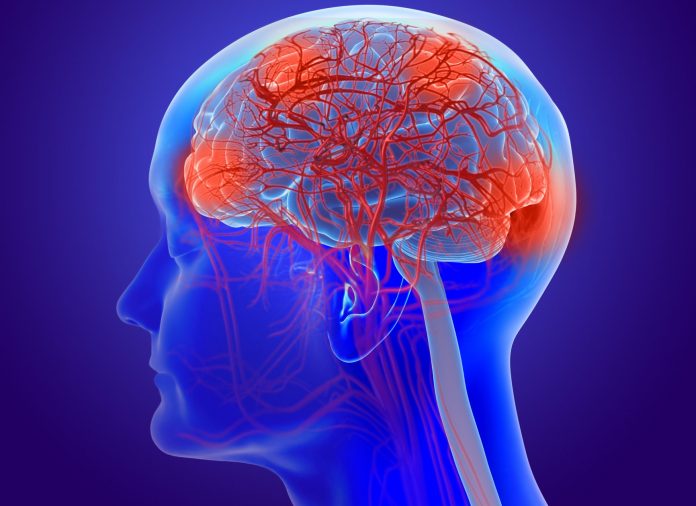
An experimental blood test may be able to predict dementia 15 years before symptom onset.
- Every 3 seconds, someone in the world develops dementia.
- Because dementia disease progression may be slowed in its earliest stages, researchers are constantly working on better dementia prediction tools.
- Scientists from The University of Warwick in the United Kingdom and Fudan University in China have identified 11 proteins that can be used as biomarkers to predict dementia 15 years before diagnosis.
Researchers estimate that every 3 seconds, someone in the world develops dementia — a condition affecting the brain that causes cognitive issues.
There is currently no cure for dementia. However, there are ways doctors can help slow the disease’s progression when caught in its earliest stages.
For this reason, scientists have been working on new ways to predict whether a person will develop dementia or not.
For example, a study published in August 2023 presented an 11-point risk score to predict dementia 14 years before diagnosis. And research published in October 2022 reported it is possible to see signs of dementia as early as 9 yearsTrusted Source before diagnosis.
Adding to this previous research is a new study from scientists at The University of Warwick in the United Kingdom and Fudan University in China that has identified 11 proteins that can be used as biomarkersTrusted Source to predict dementia 15 years before diagnosis.
The study paper appears in the journal Nature AgingTrusted Source.
Using blood proteins as biomarkers
For this study, scientists focused on proteins as biomarkers to help forecast if a person might develop dementia.
According to Prof. Jianfeng Feng, a professor at The University of Warwick in the U.K. and Fudan University in China, and the lead author of this study, the focus on proteins stemmed from their previous research.
“Last year we worked out a prediction methodTrusted Source using other types of data 10 years ago with an AUC (area under the curveTrusted Source) of 85%,” Prof. Feng told Medical News Today. “Proteins are much more reliable than a purely genetic approach using genes or SNPsTrusted Source [single nucleotide polymorphisms] only.”
This is not the first study to look at using proteins as biomarkers for early dementia diagnosis.
A study published in June 2023 identified the protein NPTX2Trusted Source as a potential biomarker for Alzheimer’s disease, which is the most common type of dementia.
And research published in October 2021 reported that blood proteins called microRNAs may be used to identify early Alzheimer’s disease risk.
Predicting dementia 15 years before diagnosis
Prof. Feng and his team analyzed blood samples of over 52,000 adults without dementia from the UK Biobank. These blood samples were collected between 2006 to 2010 and frozen.
As of March 2023, 1,417 people who provided blood samples had developed dementia. Using AI machine learning, the researchers identified 11 specific proteins found in the blood samples of the people who had developed dementia.
These 11 proteins were then combined into a protein panel. According to researchers, when also incorporating traditional dementia risk factors such as ageTrusted Source, genderTrusted Source, education levelTrusted Source, and genetics, they were able to predict a person’s likelihood of developing dementia up to 15 years before diagnosis with more than 90% accuracy.
The researchers stated these 11 proteins may offer new therapeutic targets for dementia medications. Additionally, they believe this prediction panel could be an important tool for screening middle to older adults who are at a high risk of dementia.
“This model could be seamlessly integrated into the NHS [National Health Service in the U.K.], and used as a screening tool by general practitioners,” Prof. Feng says.
When asked how quickly we may see an early diagnosis test for dementia based on these protein biomarkers, his answer was that, optimistically, it could be available in half a year.
“[Our next step for this research is] to test the currently available drugs on these subjects who are early diagnosed as risk subjects,” Prof. Feng added.
Importance of early dementia diagnosis
After reviewing this study, Dr. Jennifer Bramen, a senior research scientist at the Pacific Neuroscience Institute in Santa Monica, CA, told MNT that this study advances risk prediction using proteomicsTrusted Source.
“The ability to assess the risk of multiple diseases from a single blood test could be valuable for early detection and prevention,” Dr. Bramen explained.
“Early access to novel interventions for dementia, years before diagnosis, holds the key to potentially slowing disease progression. Treating individuals at this early stage, when they are likely to be more responsive to therapy, may significantly improve their long-term quality of life and cognitive outcomes.”
– Dr. Jennifer Bramen
MNT also spoke with Dr. Karen D. Sullivan, a board-certified neuropsychologist, owner of I CARE FOR YOUR BRAIN, and Reid Healthcare Transformation Fellow at FirstHealth of the Carolinas in Pinehurst, NC, not involved in the research, about this study.
Dr. Sullivan said it was a well-designed study and she liked the practical clinical utility of having one omnibus stratified risk score (ProRS) in place of multiple, cumbersome, and expensive lab tests that measure risk separately.
“Many dementias start on a neurophysiological level many years, if not decades, before their clinical manifestations of symptoms like cognitive decline or behavior change,” she continued.
That means that, “[b]y the time we see clinical symptoms in dementia, networks of brain cells have been ravaged by a disease process, and meaningfully changing the course is extremely challenging.”
“The earlier we know who is going to develop the subtypes of dementia, the earlier intervention we can offer and the better the long-term outcomes,” Dr. Sullivan added.
“That’s when we will have the power to find a cure or nip neurodegeneration in the bud. It has to be before it starts or at the very earliest changes. Waiting until we can measure symptoms in clinical assessments puts us way behind the eight-ball of meaningful medical treatment,” she told us.
More research needed
For the next steps in this research, Dr. Sullivan said, “[w]e need to see their models externally validated by other groups before we can consider bringing it to real-world patient populations.”
And Dr. Bramen commented that the current study primarily focused on a white European population, so further research should aim to work with cohorts of different ethnicities.
“To ensure generalizability, validating the findings in diverse populations would be an important next step,” she said. “Translating these findings into a practical clinical tool suitable for routine care will also require significant development.”








